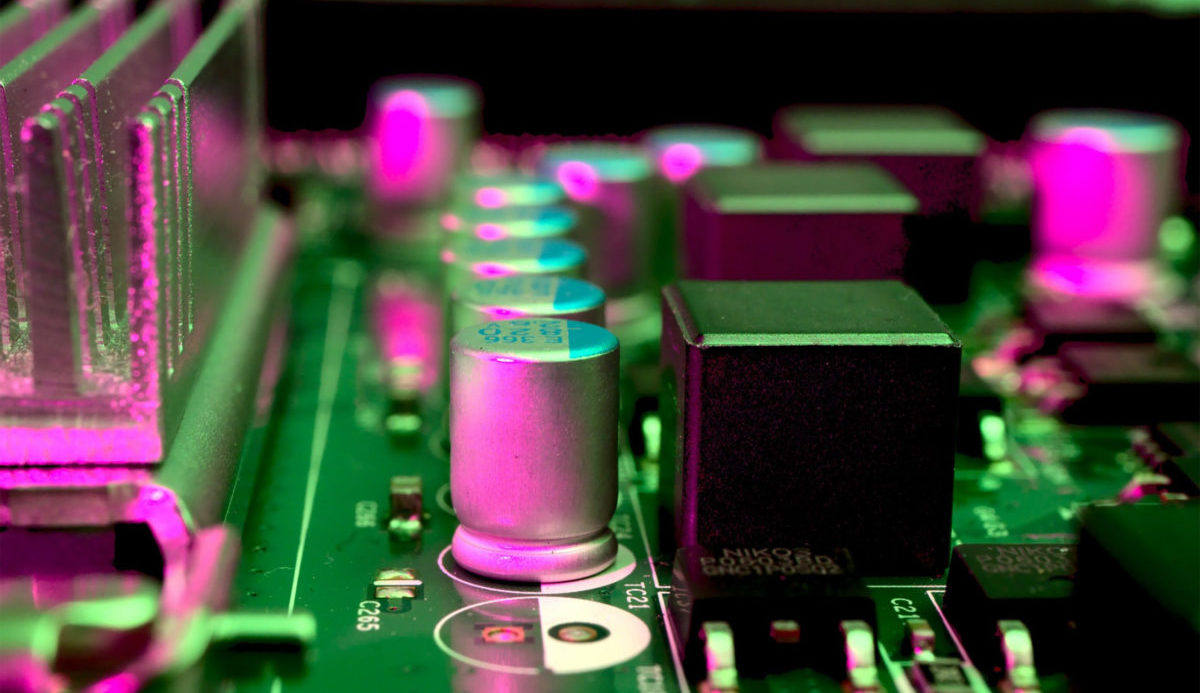AI-based talent management: a guide for HR leaders
Learn how to use advancements in AI to take skills-based strategies to the next level

As generative AI breaks onto the scene, a new generation of AI-powered HR tools is simultaneously gaining traction. These innovations come as HR leaders approach a critical turning point in their professional lives. While talent needs were once fairly predictable and jobs served as the dominant model for structuring work, today executives are beginning to embrace skills-based approaches designed to equip their organizations with the level of agility that our new working world demands.
HR leaders are now at the helm of reimagining the way their organizations work and proactively assessing emerging skill and talent needs to ensure their company is prepared to pivot at a moment’s notice. With this new set of challenges comes a new need for data-driven insights that will enable leaders to understand their supply of talent against market demands—which is where AI-powered HR tools come into play.
Since it’s virtually impossible for the human brain to process and juggle so many employee and skill-centric data points, organizations are turning to AI to harmonize and analyze this information and turn it into actionable insights that will inform their talent management strategy. These innovations present HR leaders with a clear picture of their talent landscape and shine a spotlight on the knowledge gaps that exist and the expertise that employees will need to hone next.
Talent management, explained
Before we dive into the AI component, let’s take a step back and break down what talent management means. In short, it’s a strategic approach employers use to attract and cultivate a highly productive workforce that is inclined to remain with the organization for the long term. Gartner describes it as “The attraction, selection, and retention of employees, which involves a combination of HR processes across the employee lifecycle. It encompasses workforce planning, employee engagement, learning and development, performance management, recruiting, onboarding, succession, and retention.”
What is AI-based talent management?
AI-based talent management is the use of artificial intelligence to recruit, develop, and retain employees by automating HR tasks, analyzing workforce data, and personalizing career growth pathways. It enhances decision-making, reduces bias, and improves efficiency in hiring, training, skill development, and performance evaluation.
Limitations in the traditional talent management process
Talent management practices have remained largely unchanged since the start of the Industrial Age over 100 years ago. Prior to this era, workers were largely interchangeable and treated like cogs in well-oiled machines. That all changed in the 1920s when innovations like locomotives and steam engines enabled businesses to begin working more efficiently, during which time a new set of talent management practices like performance management and succession planning were introduced.
While these ways of working served businesses when our world was relatively stable and organizational goals and demands were predictable, they don’t hold up in the era of accelerating innovation we’re currently living in, which is also known as the Post-Industrial Age. Now that the labor market is growing more competitive, consumer demands are shifting, and AI is changing the skills workforces need, leaders must develop new talent management processes that account for such a dynamic chapter. And that’s where AI can come into play. Rather than relying on static systems and processes, executives can look to a new generation of AI-powered tools to gain the insights they need to pivot their business, build emerging skill needs, and adapt seamlessly on the fly.
AI-based talent management: a game-changer for HR
Thanks to a new generation of AI innovations, HR leaders no longer need to rely on spreadsheets and HCM platforms for insights about their workforce’s skills and potential knowledge gaps. Instead, AI-powered skills intelligence tools enable executives to gain an in-depth view of the skills their people have that updates in real-time as employees continue to hone new competencies. Leaders can also use these systems to evolve their job architectures as skill needs and business priorities shift, enabling them to adjust job design to meet emerging needs across the market.
Beyond gaining an in-depth view of the skills their workforce has and the capabilities they need, AI-powered talent management tools can help HR redeploy their workforce. Platforms like talent marketplaces match people to open opportunities across the organization based on their skills, interests, and capacity, in turn fueling internal mobility and encouraging employees to gain cross-functional expertise by participating in an array of projects.
Why should HR leaders care?
Taking an AI-powered approach to talent management can benefit organizations in a number of ways. Once leaders gain access to the in-depth view of skills that AI can provide, leaders can map out the skills and roles that are most crucial to their business, see where existing skills lie, and identify any potential gaps in knowledge before they snowball into bigger problems.
AI systems can also help HR avoid overspending on hiring and recruitment by showcasing employees who can be upskilled or reskilled to move into high-priority roles within their organization. These tools also shed light on transferable skills that indicate that an employee from one team or department would be a qualified match for a job opportunity or project in an entirely different domain that HR may not have considered otherwise.
How AI is being used in talent management
AI has the potential to transform many elements of the talent management process, including:
#1. Get an in-depth view of skills
Traditionally, it’s been challenging for leaders to gain a bird’s eye view of workforce capabilities because skills information is typically siloed into a few different HR systems. Most taxonomies are also outdated, leading to talent strategies that may not address the organization’s actual needs.
Rather than settling for this sub-par understanding of workforce skills, companies are harnessing skills intelligence tools to gain visibility into all of their peoples’ capabilities. These systems are updated in real-time and pull from an employee’s LinkedIn profile or CV, in turn capturing the full range of knowledge and experience they’re bringing to the table.
#2. Enhanced talent acquisition
Once leaders have a clear view of the skills they have and any knowledge gaps that are emerging, they will be equipped to make talent acquisition decisions that address these potential shortages. Executives will no longer have to wonder if they already had someone with the skills they were looking for before posting a job opening because they will be able to see which employees have transferable skills that would make them strong candidates for any open role.
#3. Data-driven decision-making
Every element of business is becoming more data-driven and HR is no exception. To minimize risks and set their organizations up for success in an ever-changing talent landscape, executives are looking to data-driven insights to help them carve a path forward. 85% of CHROs now view data as an essential part of their HR strategy, underscoring the importance of insights and analytics in all talent management initiatives.
#4. Personalized learning and development
While employees were once expected to follow rigid, vertical ladders when they wanted to progress their careers, that’s no longer the case in the Post-Industrial era. As life expectancies lengthen and employees continue to place a high premium on purpose-driven work, careers are starting to turn into portfolios of lateral and vertical development opportunities that align with business needs and employee ambitions. AI-powered systems like talent marketplaces can help employees surface opportunities for mentorships, projects, gigs, and full-time roles that match their goals.
#5. Resource faster to accelerate innovation
AI can help leaders reallocate talent efficiently so they can launch products, deliver against priorities, and mitigate challenges efficiently. Without full insight into the skills their people have, executives will struggle to find candidates with the capabilities and transferable skills needed to tackle various high-priority projects. AI makes it easier for leaders to pinpoint employees with the skills they’re looking for, so they can spin up cross-functional teams or talent redeployments that enable their organization to respond to challenges more efficiently.
What potential risks should HR leaders watch out for?
Although there are plenty of benefits associated with AI-powered talent management tools, there are also 3 main considerations HR leaders must prioritize, including:
#1. AI may not always be the answer
As more new use cases for AI emerge, leaders are struggling to determine which are a good use of their time and investment—and which they should avoid. Paula Goldman, Chief Ethical and Humane Use Officer at Salesforce, predicts that executives are quickly becoming more strategic about their AI use, noting, “I think people are becoming smart about what these new tools are good for and what they’re not good for. I think we’re seeing the emergence of a set of norms and standards for how we interact with these tools responsibly.”
#2. Data collection concerns must be taken seriously
The ability to use AI ethically is reliant on feeding AI models data that is sourced responsibly. According to Goldman, data collection needs to be a top consideration for leaders who are thinking about implementing AI-powered systems. “We often have customers coming to us very excited about AI and we’re obviously very excited as well. But the first question needs to be ‘How is your data?’’ she explains. Leaders must ensure employees consent to their data being collected and that they understand how it will be used.
#3. Leaders can’t view AI as a cure-all
While some executives may be tempted to experiment with as many AI use cases as they can, experts like Goldman encourage leaders to take a more selective approach. She compares today’s AI to a “really good assistant”, noting that there are “…a lot of limitations, there are sometimes problems around accuracy and toxicity. But there’s no doubt that if you’ve read any number of headlines, there are also some serious workplace transformation issues we’re going to need to grapple with as a society.”
The importance of human collaboration with AI talent management
While there are plenty of dramatic headlines forecasting that AI will one day replace humans, the truth is that human-machine collaborations are much more likely to become the norm.
Although AI can help employees with some hard skills such as composing an email or writing lines of code, these tools are unlikely to master essential soft skills like problem-solving, critical thinking, and conflict resolution. Consequently, it will be particularly important for HR leaders to prioritize these types of competencies so they can use AI to enhance and augment talent management processes while ensuring they remain employee-centric and human-led.
The future of AI in talent management
While no one has a crystal ball to see how AI will shape future HR strategies, it’s safe to say that these innovations will continue to transform talent management strategies for years to come. As AI systems continue to learn from employees’ preferences regarding career growth opportunities, they’ll be able to generate hyper-personalized suggestions for skill-building and development with greater accuracy.
Workforce planning will benefit from the insights that AI-powered talent management tools provide, meaning companies will get better at predicting the capabilities their businesses need long before they actually require them. This will help businesses run more efficiently by ensuring managers always have access to the skills and capabilities they’re looking for.
If you want to learn more about what the future holds for AI-powered talent management strategies, check out this conversation we hosted with some of the foremost experts in the space.




